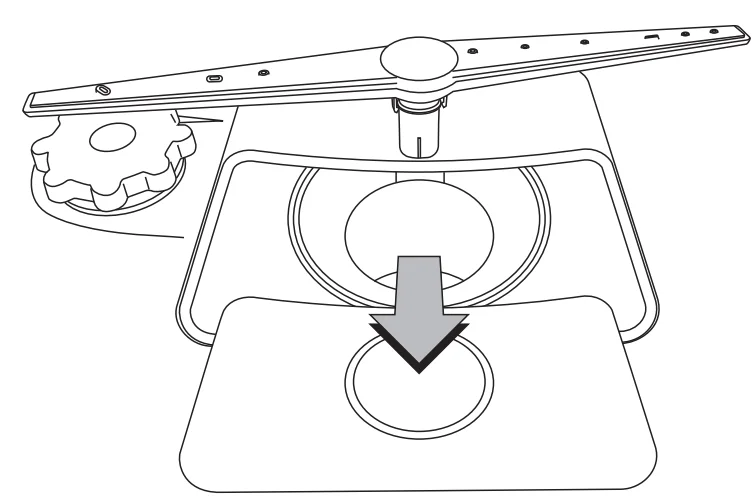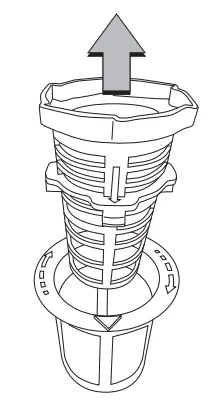
Kenwood KDW60X20 Freestanding Full-Size Dishwasher
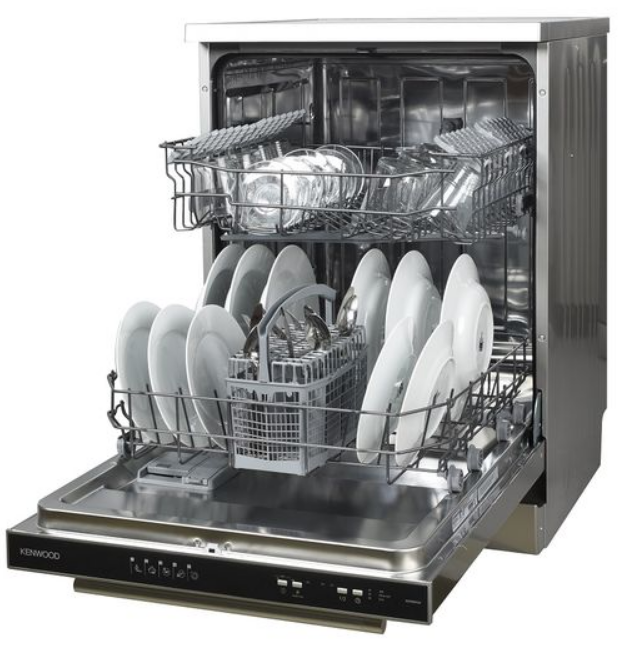
Safety Warnings
- Read all instructions carefully before using the dishwasher and keep them for future reference.
- Retain the manual. If you pass the dishwasher onto a third party, make sure to include this manual.
- This appliance can be used by children aged 8 years and above and persons with reduced physical, sensory and mental capabilities, or lack of experience and knowledge, if they have been given supervision or instruction concerning e use of the appliance in a safe way and understand the hazards involved. Children shall not play with the appliance. Cleaning and user maintenance shall not be made by children without supervision.
- Keep ventilation openings in the dishwasher enclosure clear of obstructions.
- Choose a location for your dishwasher away from heat sources such as radiators or fires.
- Young children should be supervised to ensure that they do not play with the dishwasher.
- Keep the mains cable out of reach of children.
- Keep children away from detergents and rinse aids. These may cause chemical burns in the mouth, throat and eyes or asphyxiation.
- Keep children away from the dishwasher when the door is open.
- Switch off water and power and unplug before fitting or removing tools/ attachments, after use and before cleaning.
- Keep your fingers away from moving parts and fitted attachments.
- Never use a damaged machine.
- If the mains cable is damaged, it must be replaced by the manufacturer, its service agent or a qualified technician in order to avoid a hazard.
- Keep the power unit, mains cable and plug away from water.
- Never exceed the maximum capacities.
- 2 people are required to lift this dishwasher.
- Only use the dishwasher for its intended indoor domestic use. The company responsible for this product, DSG Retail Limited, will not accept any liability if the appliance is subject to improper use orr failure to comply with these instructions.
- Do not use with an extension lead or external timer.
![]() Warning:
Warning:
IT IS HAZARDOUS FOR ANYONE OTHER THAN AUTHORISED SERVICE PERSONNEL TO CARRY OUT SERVICING OR REPAIRS WHICH INVOLVE THE REMOVAL OF COVERS.
![]() TO AVOID THE RISK OF AN ELECTRICAL SHOCK, DO NOT ATTEMPT REPAIRS YOURSELF.
TO AVOID THE RISK OF AN ELECTRICAL SHOCK, DO NOT ATTEMPT REPAIRS YOURSELF.
- Do not sit or stand on the door or dish rack.
- Do not move your dishwasher by holding the door or its edges. Hold the dishwasher around its sides or base when moving it.
- Do not touch the heating element during or immediately after use.
- Do not operate your dishwasher unless all enclosure panels are properly in place. Open the door very carefully when there is a programme running, as there is a risk of hot water spraying out of the appliance.
- Do not place any heavy objects on the open door. The appliance could tip.
- When loading items to be washed:
- Locate sharp items so that they will not damage the door seall.;
- Warning: Knives and other utensils with sharp points must be loaded in the basket with the sharp points downwards or placed horizontally.
- Do not allow plastic items to come into contact with the heating element.
- Check that the detergent receptacle is empty after completion of the wash cycle.
- Do not wash plastic items unless they are marked dishwasher safe or equivalent.
- Use only detergentsand rinse aids designed for an automatic dishwasher.
- The mains plug must be easily accessible, le or an easily accessible switch must be incorporated in the fixed wiring with at least 3mm contact separation in all poles.
- The door should not be left in the open position since this could present a tripping hazard.
- For energy saving, always remember to switch the dishwasher off when you have finished using it.
- The dishwasher should not be left unattended when in use.
- Remove the door to the washing compartment when removing an old dishwasher from service or discarding it.
- During installation, the power supply cord must not be excessively or dangerously bent or flattened. Kenwood Freestanding Dishwasher KDW60X20 Manual.indd 6 29/01/2021 12:37
- Do not dismantle, repair or modify the Dishwasher. This may invalidate your guarantee and could lead to a malfunction and cause fire or injury.
- Do not tamper with controls.
- The appliance is to be connected to the water mains using new hose sets.
- The maximum number of place settings to be washed is 12.
- The maximum permissible inlet water pressure is 1MPa, and the minimum permissible inlet water pressure is 0.03MPa.
- It is recommended to switch off the power and water when the appliance is not in use.
- Capacity – 12 place settings.
- Product dimensions – 850 mm (H) x 598 mm (W) x 598 mm (D)
- For supporting and fixing the appliance, see the Installation section.
Installation
Unpacking
Remove all packaging from the unit. Retain the packaging. If you dispose of itt,please do so according to local regulations.
The following items are included:
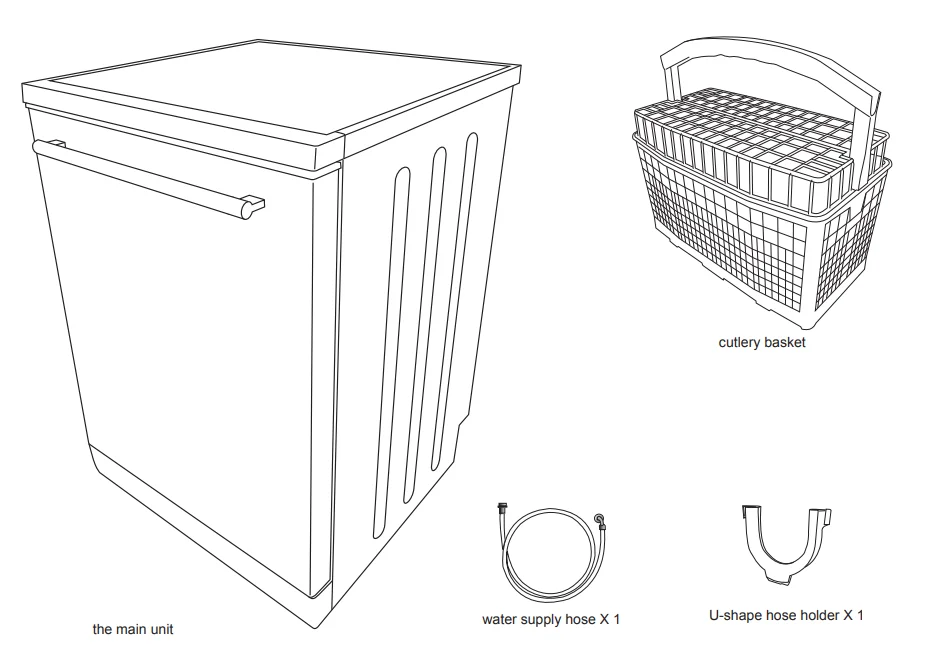
![]() This product has been wet tested to ensure correct operation. As a result, some water may remain inside the unit. This is normal and safe. Remove any water droplets from the exterior if necessary.
This product has been wet tested to ensure correct operation. As a result, some water may remain inside the unit. This is normal and safe. Remove any water droplets from the exterior if necessary.
Location
When selecting a position for your dishwasher,, er you should make sure the installation surface is flat and firm, and the room is well ventilated. Avoid locating your dishwasher near a heat source, e.g. cooker, boiler or radiator. Extreme cold ambient temperatures may also cause the appliance to not perform properly. This dishwasher is not designed for use in a garage or outdoor installation.
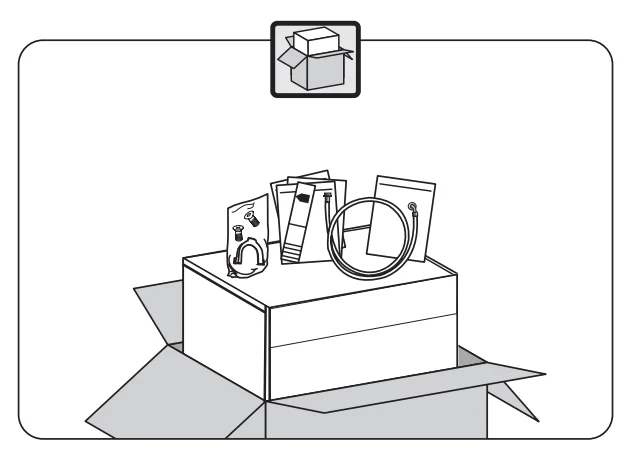
![]() All parts removed must be saved to do the reinstallation in the future. Ensure the dishwasher is unplugged and empty. We recommend that 2 people handle the dishwasher during installation.
All parts removed must be saved to do the reinstallation in the future. Ensure the dishwasher is unplugged and empty. We recommend that 2 people handle the dishwasher during installation.
- Please ensure the dishwasher is installed
by a qualified technician. Refer to the tools
required (not included). The supplied door template contains installation information which will assist ist installation.
The supplied door template contains installation information which will assist ist installation. - Ensure there is sufficient clearance on each side of the unit to allow slight sideways movement for servicing when required. Good levelling is essential for the correct closure and sealing of the door. When the unit is correctly levelled, the door should not catch the inner liner on either side of the cabinet. The adjustable feet may be loosened or tightened in order to obtain the optimum levelling of the unit.
All parts removed must be saved to do the reinstallation in the future. Ensure the dishwasher is unplugged and empty. We recommend that 2 people handle the dishwasher during installation. * All images are for reference only; please refer to your individual unit for the actual item.
* All images are for reference only; please refer to your individual unit for the actual item. - Do not connect the unit to the mains socket before installation. Ensure you are not installing the unit right in front of the mains socket. This is to avoid potential damage to the back of the unit.
 * All images are for reference only; please refer to your individual unit for the actual item.
* All images are for reference only; please refer to your individual unit for the actual item. - Position the dishwasher next to a water tap and a drain. Ensure the water inlet and drain hoses are not kinked or squashed. The unit must not stand on the mains cable.

- Make sure your plumbing is suitable for use with the dishwasher. If in doubt, contact a qualified plumber. This unit MUST BE connected to COLD WATER MAINS using the new water supply hose. OLD HOSE SETS MUST NOT BE RE-USED. The water pressure from the water mains needs to be at a minimum of 0.04 MPa and a maximum of 1.00MPa.

- Connect one end of the water supply hose to your dishwasher, and then connect the other end of the hose to your water mains. Please ensure the black rubber seal is in place.
- After connecting the hose, turn on your water mains and check for leaks.
- Connect the dishwasher to the mains socket.
You may use a Y-adaptor (not included) for an additional water feed for another appliance, for example, a washing machine. This is only applicable to the cold water mains. A Y-adaptor is available from most DIY stores.
* All images are for reference only; please refer to your individual unit fothe r actual item. - Do not bend or kink your drain hose.

- You may use the U-shaped drain hose holder to secure your drain hose and to avoid kinking it.

- Secure the water drain hose to the waste pipe to avoid it coming off during the washing process.

 The waste pipe must only be connected to the foul drains and not the surface water drainage system.
The waste pipe must only be connected to the foul drains and not the surface water drainage system.- The water drain hose should be placed between 40 cm and 100 cm from the floor level and must not be extended; otherwise, the unit may not be able to expel the wastewater properly.
 * All images are for reference only; please refer to your individual unit for the actual item.
* All images are for reference only; please refer to your individual unit for the actual item.
Product Overview
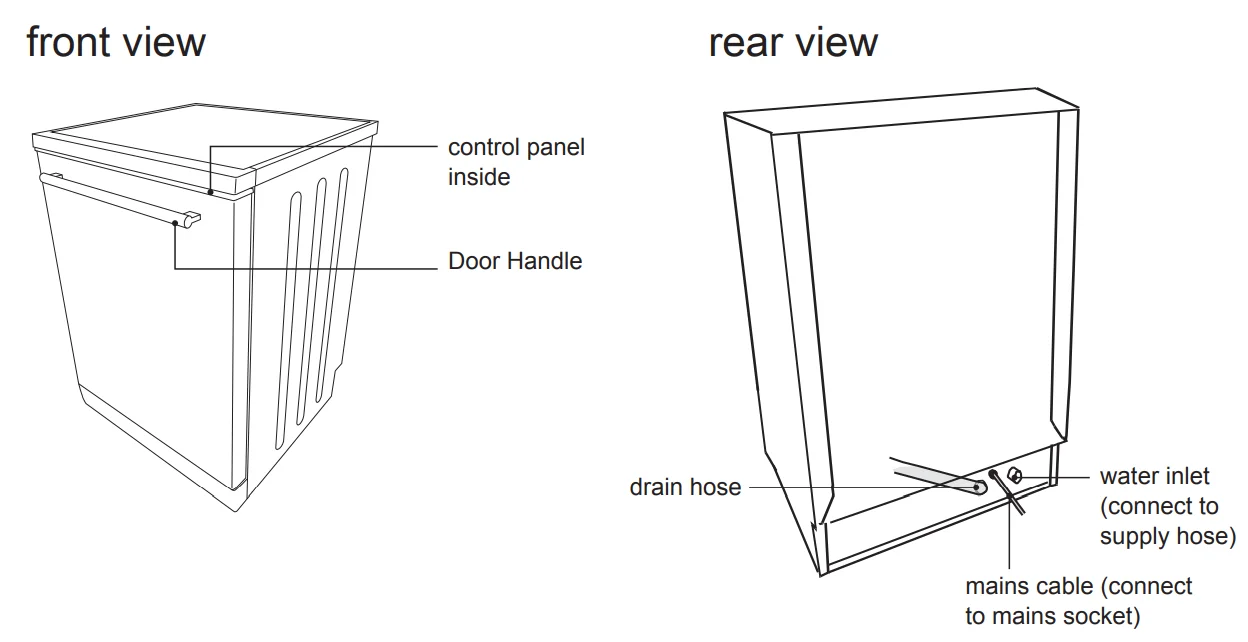
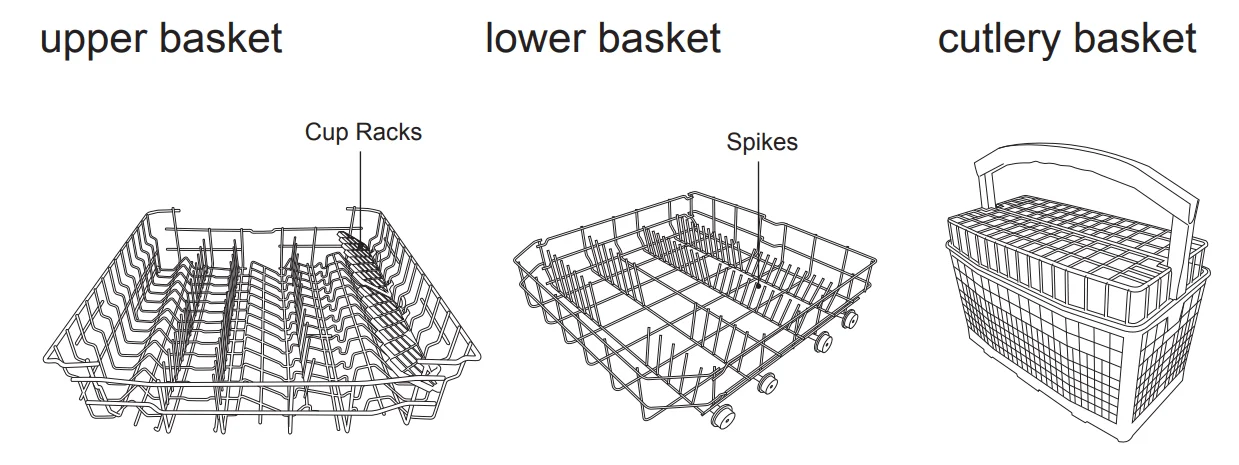
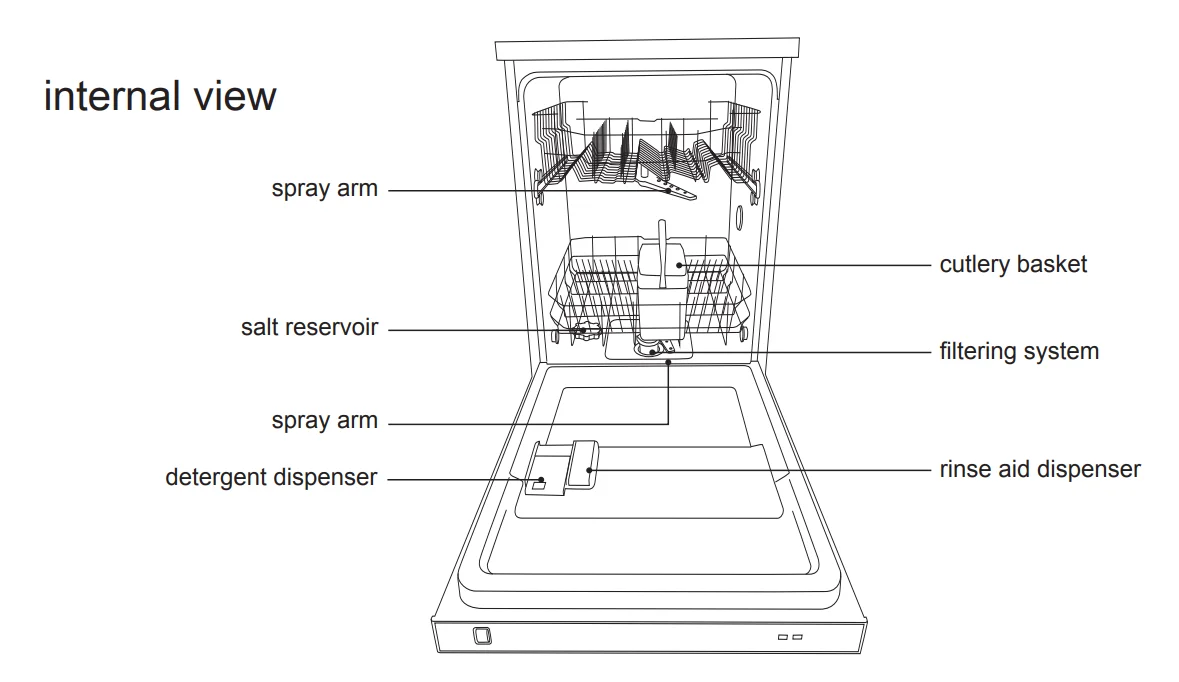
Control Panel ﹠ Display Window

- Programme indicator LEDs
- display the elected programme.
- The half-load indicator LED
- displays when half load has been selected.
- Delay timer indicator LEDs
- display selected delay time 3:h, 6h or 9h.
- The low warning indicator light
- illuminates when there is not sufficient softening salt in the dishwasher. The The
The rinse aid low indicator light - illuminates when there is not sufficient rinse aid in the dishwasher.
Of end-of-program indicator light - illuminates when the selected washing program is completed. The dishwasher also gives a buzzer sound 5 times when the program is completed.
- illuminates when there is not sufficient softening salt in the dishwasher. The The
- The delay timer button
- delays the start of a preset washing programme by 3, 6 or 9 hours.
- The half-load button
- when you are washing only half a load.
- The programme button
- selects your required washing programme.
- Press and hold to reset a programme.
- ON/OFF button
- turns the dishwasher on and off.
- One of the Programme LED lights when the dishwasher is on.
Before operating
Opening the door
- Pull the door handle.
- If the door is opened during operation, first open the door slightly to avoid water spillage.
If the door is opened during operation, all functions are automatically interrupted.
Closing the door
- After loading the dishes, push the baskets fully into the dishwasher.
- Lift the door upwards and push until it clicks into position.
- Do not slam the dishwasher door.
Items not suitable for use in the dishwasher
When purchasing new crockery and cutlery, please make sure it is dishwasher-proof. Some items are not suitable for dishwashers.
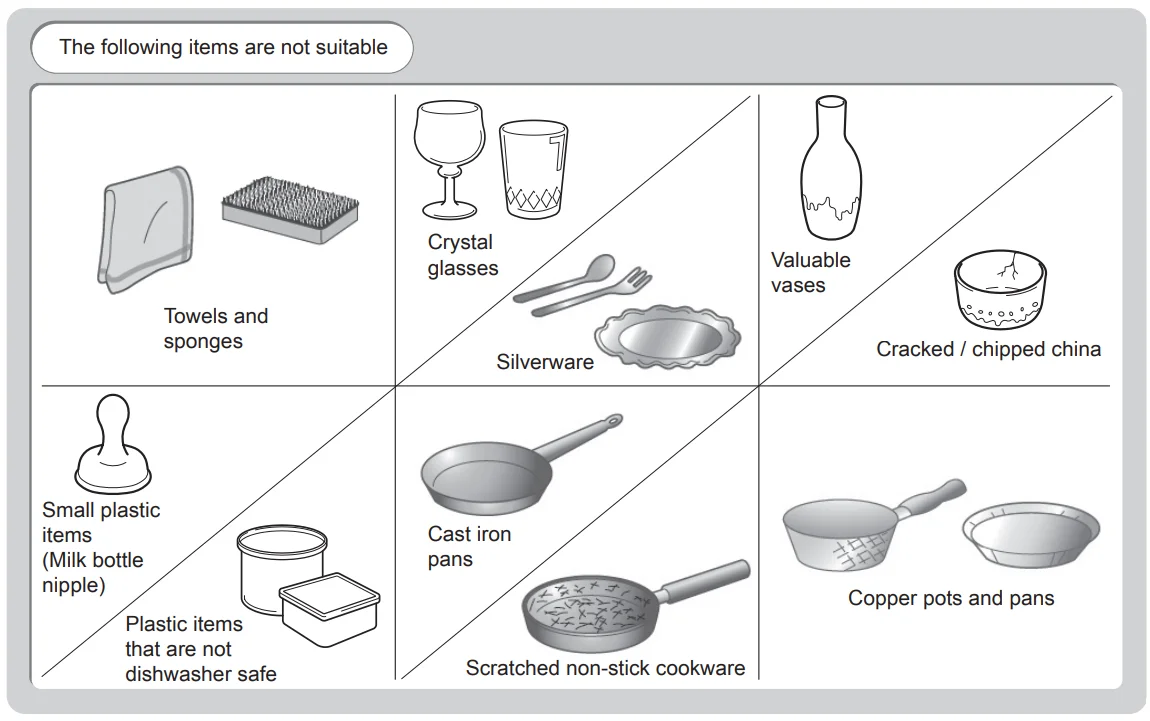
- Wooden cutlery and crockery or items with wooden parts may discolour and fade. The glue used in these items is not dishwasher-proof a,, nd wooden handles may come loose after being washed in a dishwasher.
- Craft items, antiques, valuable vases and decorative glassware are also not suitable for dishwashers.
- Plastic items (e.gTupperwarere) which are not heat-resistant may melt or losshape dueue to the high temperature in the dishwasher.
- Copper, brass, tin and aluminium items may discolour or become matt.
- Clouding may occur on glasses and delicate glassware after frequent washing. Do not wash delicate glassware or glassware containing lead crystal, a dishwasher. Wash delicate glassware by hand instead.
- Silver and aluminium parts have a tendency to discolour during washing. Residues like egg white, egg yolk and mustard often cause discolouring and staining on silver. Therefore, please clean the residues from the silvthe er immediately after use.
Adding detergent
Only use detergents specifically designed for use in dishwashers. To be more environmentally friendly, please use no more than the correct amount of detergent. Fill the detergent dispenser with detergent powder or a tablet.

![]()
- Keep detergents and bleaches out of the reach of children.
- Irritating to the eyes.
- Avoid contact with the eyes. In case of contact with the eyes, rinse immediately with plenty of water and seek medical advice.
- If swallowed, seek medical advice immediately.
Please follow the steps below to fill the detergent dispenser.
- Push the button on the lid of the detergent dispenser to open the flap with a slide open.

- Fill the detergent dispenser with detergent powder or insert the detergent tablet. The marking indicates the filling level.

- Slide the lid firmly so that it clicks into place.
Adding rinse aid
Rinse aid helps to ensure that washed crockery dries quickly and is free of marks. Only use rinse aid that is made for domestic dishwashers. This model is designed to use liquid rinse aids only. The correct amount needed will be dispensed automatically.
Please follow the steps below to fill the rinse aid reservoir.
- Open the rinse aid compartment.
- Fill the compartment with rinse aid up to the MAX level mark. Be careful not to overfill the reservoir. Wipe up any spills.
- Close the rinse aid compartment.
- The rinse aid warning light will illuminate when the reservoir needs refilling.
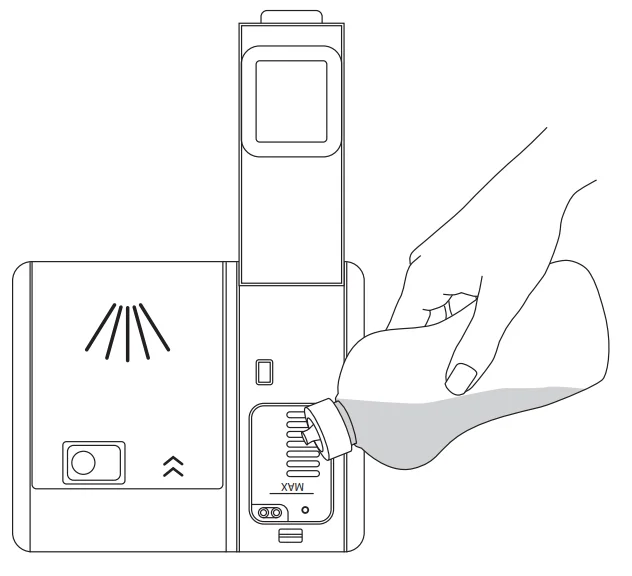
![]()
- If the water in your area is soft, you may not need to rinse it may cause white film to develop on your dishes.
* All images are for reference only; please refer to your individual unit fthe or the actual item.
If you decide to use a detergent tablet, you may not need to add rinse aid to the rinse aid reservoir.
Adjusting the rinse aid setting
The rinse aid reservoir has five settings. Both the recommended setting and the factory setting are“4.” If the dishes are not drying properly or are spotted, adjust to the next higher number until your dishes are spot-free. You find they are spotted with rinse aid when the cycle has finished. Reduce the level.
- Immediately after switching the dishwasher on (before the beeps have finished), press and hold the P button.

- Keep holding the P button down until you see all 5 Programme indicators flash TWICE. Then the indicators will show the current rinse aid setting. The factory setting is P4 and 1/2 indicator on, meaning 3 doses of rinse aid will be bdispenseddd.d

- Press the P button to scroll through the levels. The indicators will change with each press. See the table below for details.
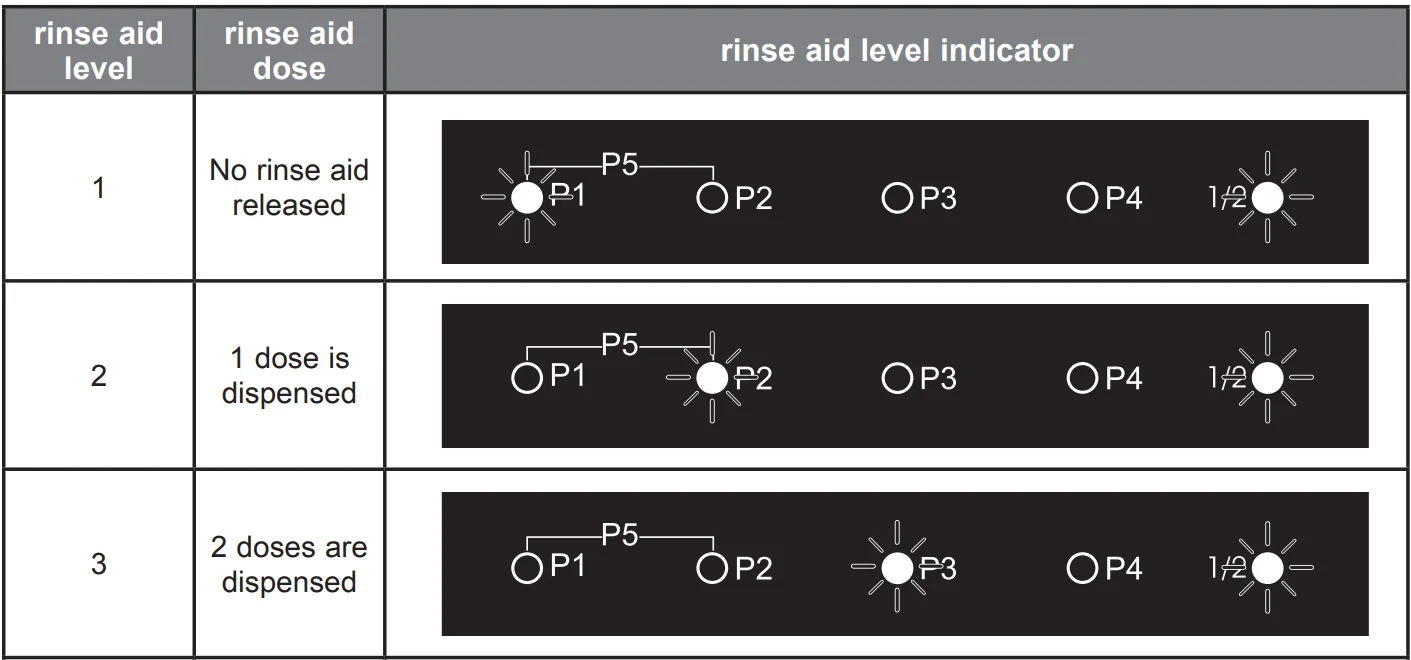

Testing your water hardness
The washing effectiveness of your machine depends on the softness of the tap water. For this reason, your machine is equipped with a system that reduces the hardness in the mains water supply. The washing effectiveness will increase when the system is correctly set. To find out the water hardness level of water in your area, contact your local water board or determine the water hardness level by using the test strip (if available).
- Open the testing strip.
- Run your cold tap for a minute,,t e then fill a cup/glass with water.
- Dip the testing strip into the water for 1 second.
- Shake off the excess water and wait 1 minute for the result.
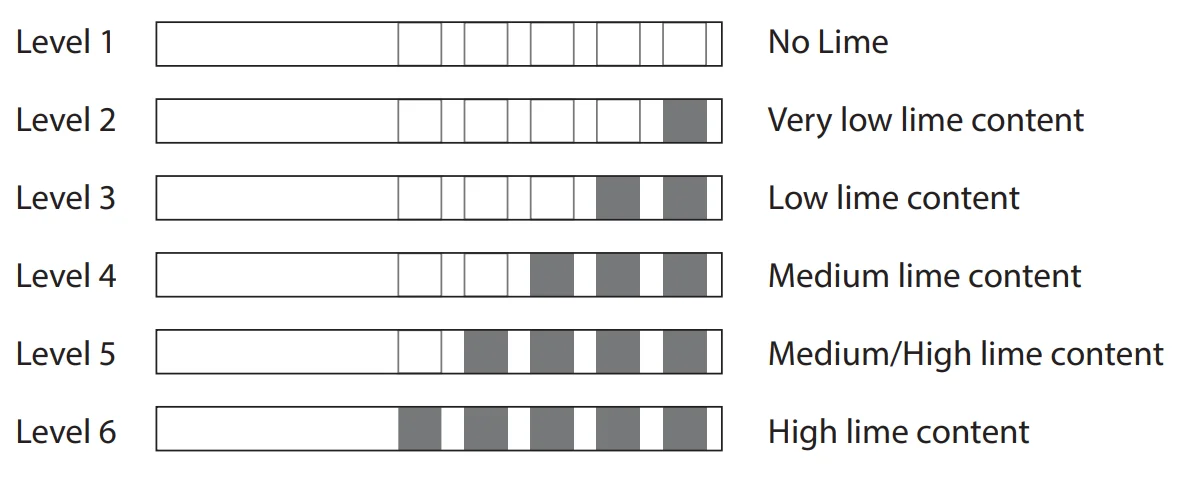
Nothat w that you have your water hardness result, you can set your dishwasher’s salt consumption level to match.
Adjusting salt consumption
Salt consumption must be adjusted to correspond to the water hardness level in your area. If you don’t know how hard the water in your home is, please ask the company that supplies water in your area. It is recommended that adjustments be made in accordance with the following chart.


- 1˚dh (German degree) = 0.18 mmol/l
- 1˚fh (French degree) = 0.1 mmol/l
- 1˚Clark (British degree) = 0.142 mmol/l
To adjust your dishwasher for the local water hardness, please follow these steps and refer to the table above.
- Immediately after switching the dishwasher on (before the beeps have finished), press and hold the P button.

- Keep holding the P button down until you see all 5 Programme indicators flash ONCE. Then the indicators will show the current salt setting.

- Press the P button to scroll through the levels. The indicators will change with each press. See the table above for details.
- To save your ssettingsswitch the dishwasher off by pressing the POWER button.
Adding salt
If you live in a hard water area, deposits may form on your dishes and utensils. Using salt softens the water and reduces the formation of deposits.
Please follow the steps below to fill the salt reservoir. The water hardness level will also need to be set.
- Remove the lower basket and turn the reservoir cap anticlockwise.
- Pour in approximately 1 kg of dishwasher salt.
- Fill the reservoir with water until it overflows (first use only).
- Clean any excess salt from around the reservoir opening and then screw the cap on again firmly.
- Run the “Rinse” programme P5 immediately (without any crockery in the dishwasher) to remove any traces of salt from the compartment.
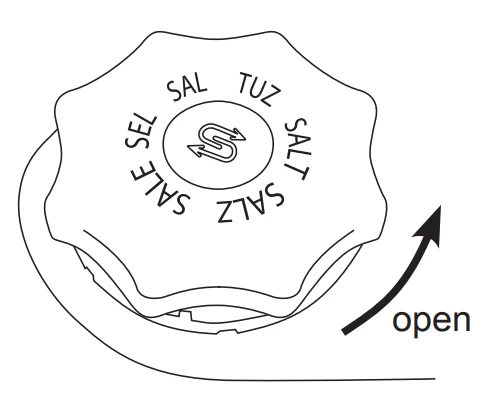
- The salt low warning indicator on the control panel will illuminate when the reservoir is running out of salt and requires refilling.
- Once refilled, the salt low warning indicator will cease to illuminate within a few days, depending on how quickly the salt dissolves.
* All images are for reference only; please refer to your individual unit for the actual item. open
![]()
- Do not use everyday table salt or cooking salt, s they contain insoluble substances which could damage the dishwasher.
- Do not pour detergent into the salt container. This will damage the dishwasher.
Wash Cycle Table
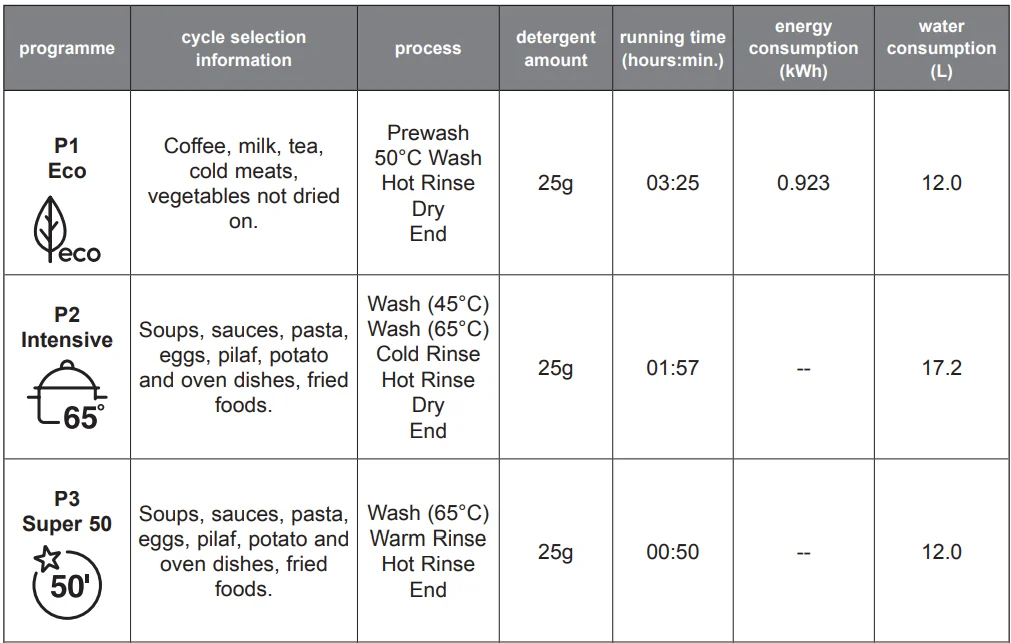

The values declared above are the values obtained under laboratory conditions according to relevant standards. These values can change depending on conditionofff the product’s use and environment (network tension, water pressure, water input temperature and environment temperature).
Condensing dry technology
- Energy is saved by drying the dishes using the remaining heat after the last rinse cycle.
- Wash cycle times are extended due to this drying method.
- Some washing programmes do not have a drying function. Please refer to the Wash Cycle Table for more details.
Using the dishwasher
- Ensure the unit is connected to the mains power and the water supply is on.
- Open the door and load the baskets. It is recommended that the lower basket be loaded first, and then the upper basket. Push the baskets back into the dishwasher.
- Pour in the detergent or place the detergent tablet in the detergent compartment and close firmly afterwards.
- Press the ON/OFF button.
- Select the wash cycle programme based on the loading and soil requirements. Please refer to the section “Wash Cycle Table”.
- The display will indicate the selected programme.
- Close the dishwasher door. A click should be heard when the door is closed correctly. Do not slam the door.
- The washing cycle will begin shortly.
![]() If you open the dishwasher door during the washing cycle and then close it, the dishwasher will continue the current washing programme after 10 seconds.
If you open the dishwasher door during the washing cycle and then close it, the dishwasher will continue the current washing programme after 10 seconds.
Changing the programme
To change the programme once a washing cycle has already started, follow the steps below.
- Open the door slightly to avoid water spillage before opening the door fully. Check if the unit has dispensed the detergent or detergent tablet. This will depend on how long the washing cycle has been running for. The last selected programme will appear on the display.
- If the detergent dispenser lid is opened, we suggest that you allow the wash cycle to finish.
- If the detergent dispenser lid is still closed, press and hold the P button to select another programme and close the dishwasher door. The new washing cycle will start shortly.
Cancelling a programme
You can cancel a programme at any time.
- Open the door slightly to avoid water spillage before opening the door fully.
- Press and hold the P button for 3 seconds, the programme will stop and the end indicator will light.
At the end of the programme
At the end of the programme, the dishwasher will beep and the end of program indicator will light up.
Switching the dishwasher off
To save energy, remember to switch the dishwasher off using the ON/OFF button. The dishwasher will continue to use electricity until it is switched off with the ON/OFF button.
![]() If the dishwasher is not going to be used for a long period of time, e.g., you are going on holiday, please disconnect the dishwasher from the mains supply and switch off the water supply.
If the dishwasher is not going to be used for a long period of time, e.g., you are going on holiday, please disconnect the dishwasher from the mains supply and switch off the water supply.
Unloading the dishwasher
Allowing dishes to cool down before unloading is important, as dishes tend to break and chip more easily when they are hot.
Unload the lower basket first, followed by the cutlery basket and then the upper basket. This will prevent water drops from the upper basket from falling onto the dishes in the lower basket.
Energy saving tipsThe
- Eco programme is suitable for cleaning normally soiled tableware; for this use, it is the most efficient programme in terms of its combined energy and water consumption, and it is used to assess compliance with the EU ecodesign legislation.
- Washing tableware in a household dishwasher usually consumes less energy and water in the use phase than hand dishwashing when the household dishwasher is used according to the manufacturer’s instructions.
- Short programs do not include drying.
- To assist drying, we recommend slightly opening the door after a cycle is complete.
- Use the half-load option if you’re only washing a small number of dishes; this will reduce the energy consumption and water usage.
- Always load the dishwasher correctly. Loading the dishwasher incorrectly could result in poor wash results and more energy consumption (see the ‘loading the dishwasher’ section for the correct loading procedure).
Cleaning the dishwasher
External care
The door and the door seal
- Clean the door seals regularly with a soft, damp cloth to remove food deposits.
- When the dishwasher is being loaded, food and drink residues may drip onto the sides of the dishwasher door. These surfaces are outside the wash cabinet and are not accessed by water from the spray arms. Any deposits should be wiped off before the door is closed.
The control panel
If cleaning is required, the control panel should be wiped with a soft, damp cloth ONLY.
![]()
- To avoid penetration of water into the door lock and electrical components, do not use a spray cleaner of any kind.
- Never use abrasive cleaners or scouring pads on the outer surfaces because they may scratch the finish. Some paper towels may also scratch or leave marks on the surface.
Internal care
Filtering system
The filtering system at the base of the wash cabinet retains coarse debris from the washing cycle.
The collected coarse debris may cause the filters to clog. Check the condition of the filters regularly and clean them if necessary under running water.
Follow the steps below to clean the filters in the wash cabinet.
- Ensure the dishwasher is switched off.
- Turn the coarse filter anticlockwise and gently lift it out.
 * All images are for reference only; please refer to your individual unit for the actual item.
* All images are for reference only; please refer to your individual unit for the actual item. - Gently lift the metal filter and pull it out.

- The centre of the filter can be removed by gently pulling it apart. Rinse all the filters under running water, including the filter cylinder, and then refit all filters in the reverse order.

- Carefully refit the main filter.
- Gently turn the coarse filter in a clockwise direction until the arrows align and it clicks into place.
![]()
- Do not over-tighten the filters.
- Put the filters back in sequence securely; otherwise, coarse debris could get into the system and cause a blockage.
- NEVER use the dishwasher without the filters in place. Improper replacement of the filters may reduce the performance level of the appliance and damage dishes and utensils.
Spray arms
Particles of food can get stuck in the spray arm jets and block them. They should be checked and cleaned regularly.

- Ensure the dishwasher is switched off.
- Check the holes in the upper and lower spray arms for clogging. If there is any clogging, remove the spray arms and clean them under running water.
- The lower spray arm can be removed by pulling it upwards, while the upper spray arm nut can be removed by turning the nut anticlockwise.
- Be sure that the nut is perfectly tightened when refitting the upper spray arm.
Maintenance for a prolonged period of non-operation
If you are not going to use the unit for a prolonged period of time, you are advised to:
- Disconnect the dishwasher from the mains.
- Disconnect the dishwasher from the water inlet and drain. Use a suitable receptacle to catch any residual water in the pipes.
- Slightly open the door to prevent unpleasant smells from building up in the compartment.
- Ensure the washing compartment of the dishwasher is clean. Should you encounter difficulties to do the above steps, please ask a service technician for assistance.
hints and tips
![]()
- Repairs should only be carried out by a qualified technician in strict accordance with current local and national safety regulations. Unauthorised or incorrect repairs could cause personal injury or damage to the unit.
- Before calling for service, please refer to Hints and Tips to solve some general problems by yourself.
fault codes
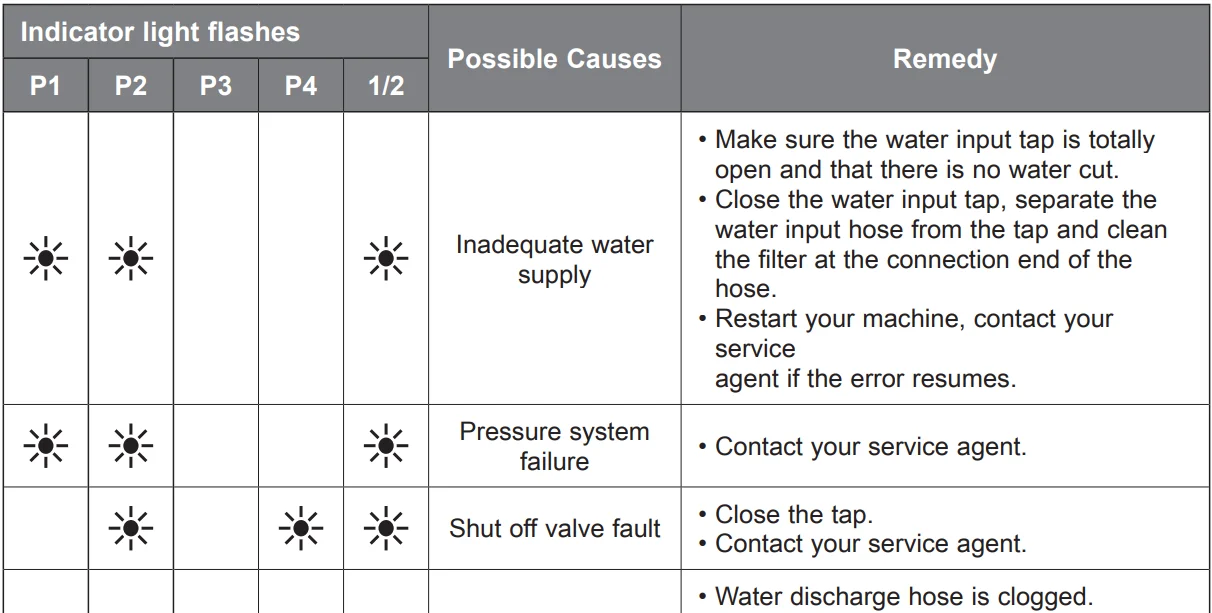
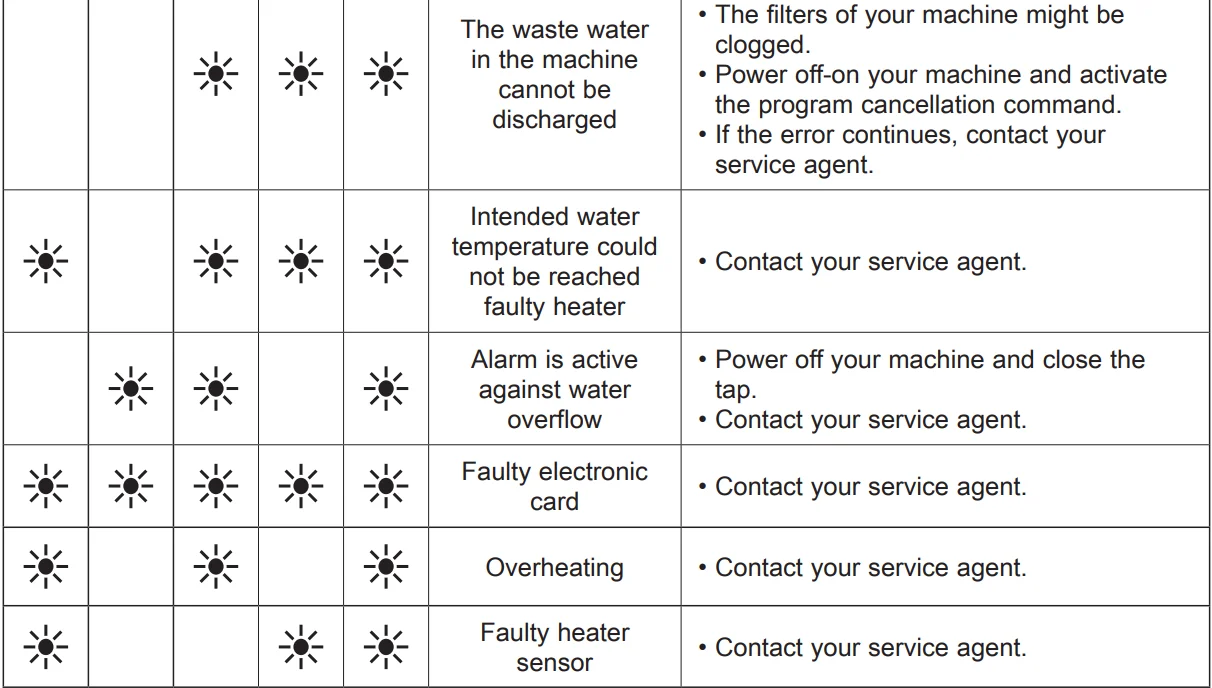
technical problems
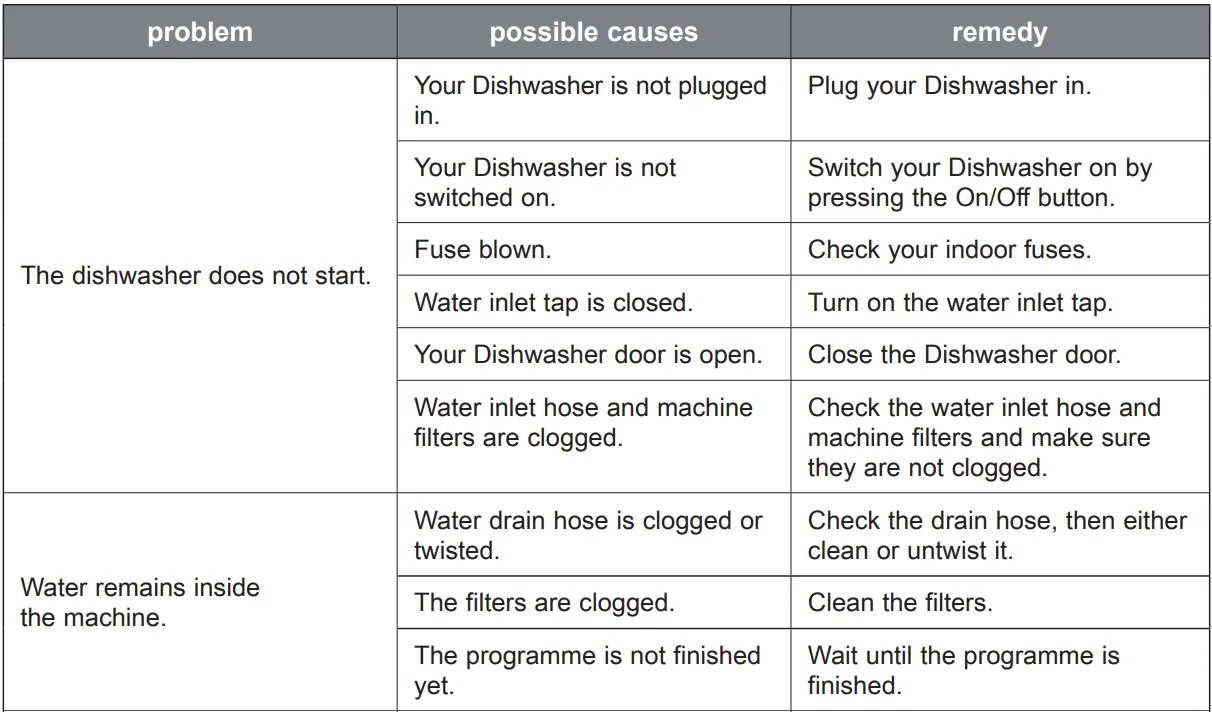

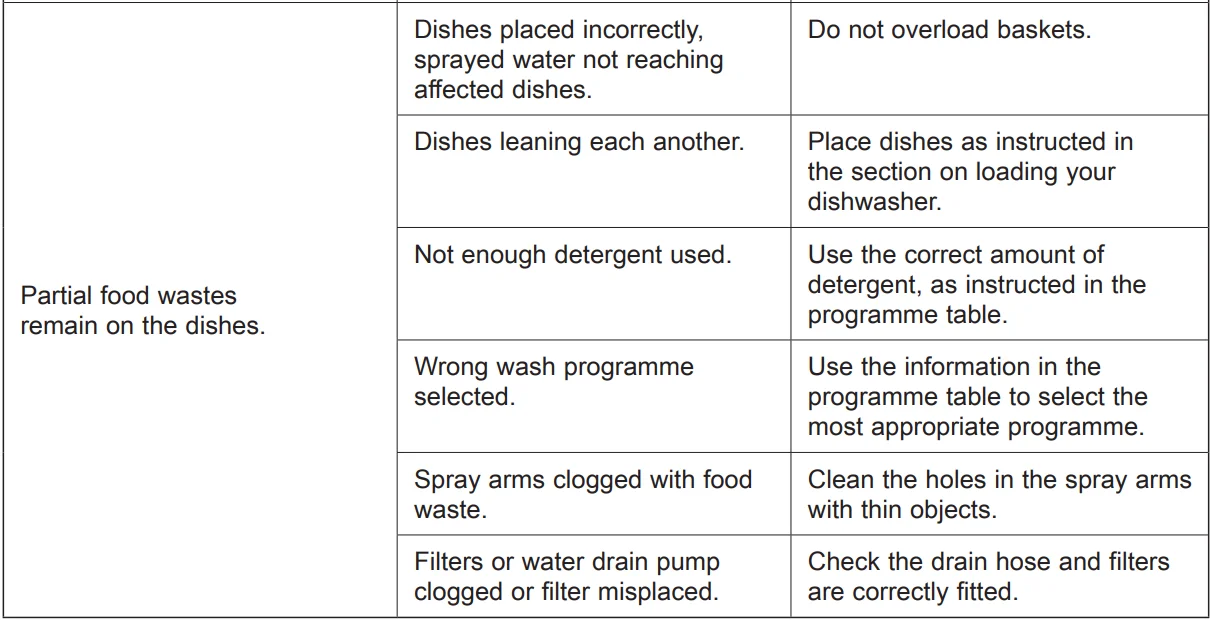
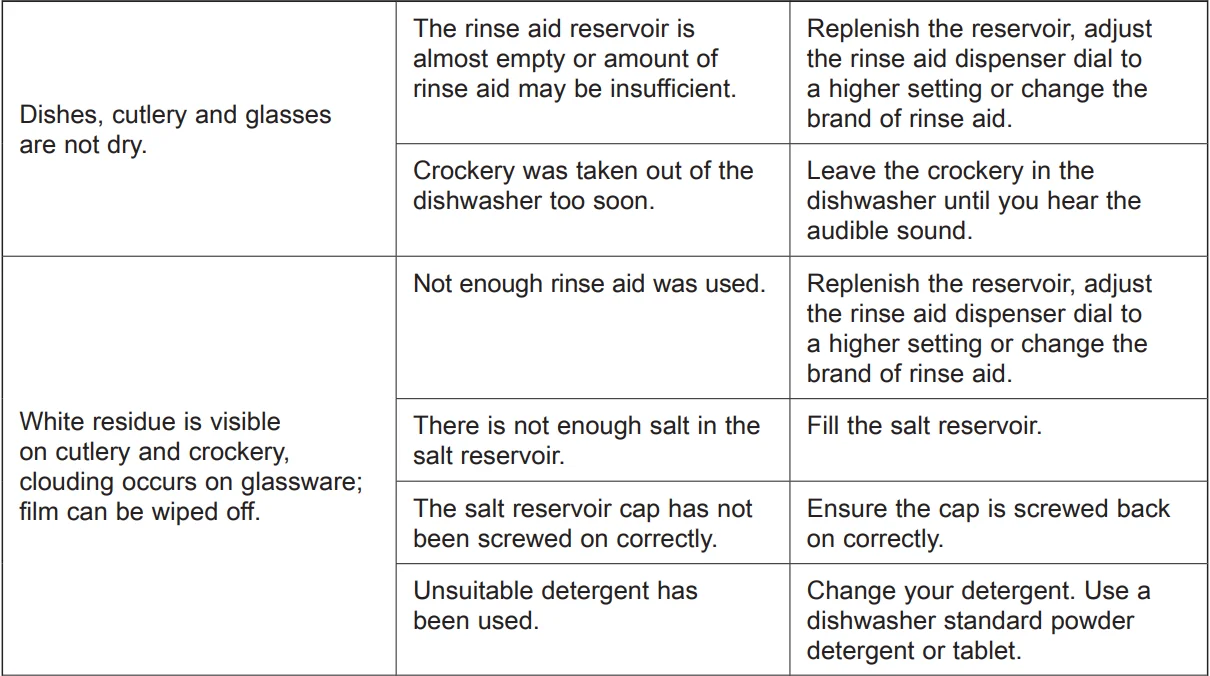

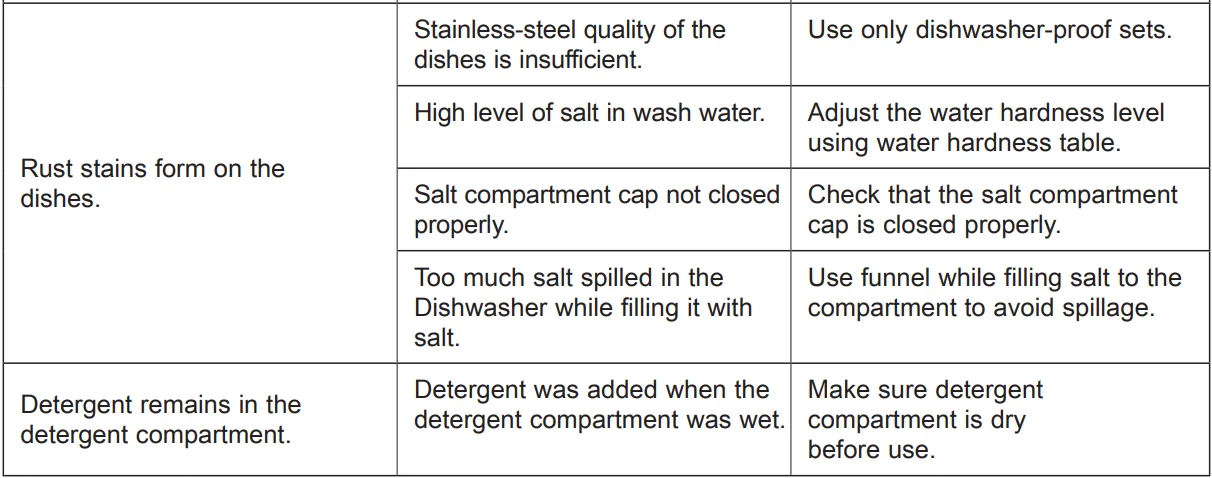
Disposal of the dishwasher
- When disposing of your old dishwasher, first make it unusable. Disconnect from the electricity and water suppliers, cut off the cable and the plug from the cable. Make the door lock inoperable so that children cannot accidentally shut themselves in. Make appropriate arrangements for the disposal of the dishwasher.
- At the end of its working life, the product must not be disposed of as urban waste. It must be taken to a special local authority differentiated waste collection centre or to a dealer providing this service. Disposing of a household appliance separately avoids possible negative consequences for the environment and health deriving from an inappropriate disposal and enables the constituent materials to be recovered to obtain significant savings in energy and resources. As a reminder of the need to dispose of household appliances separately, the product is marked with a crossed-out wheeled dustbin.
- Please ensure that it presents no danger to children while being stored for disposal.
Disposal of packing material
Please dispose of the plastic wrappings and bags safely and keep them out of the reach of babies and young children.
Product fiche and specifications
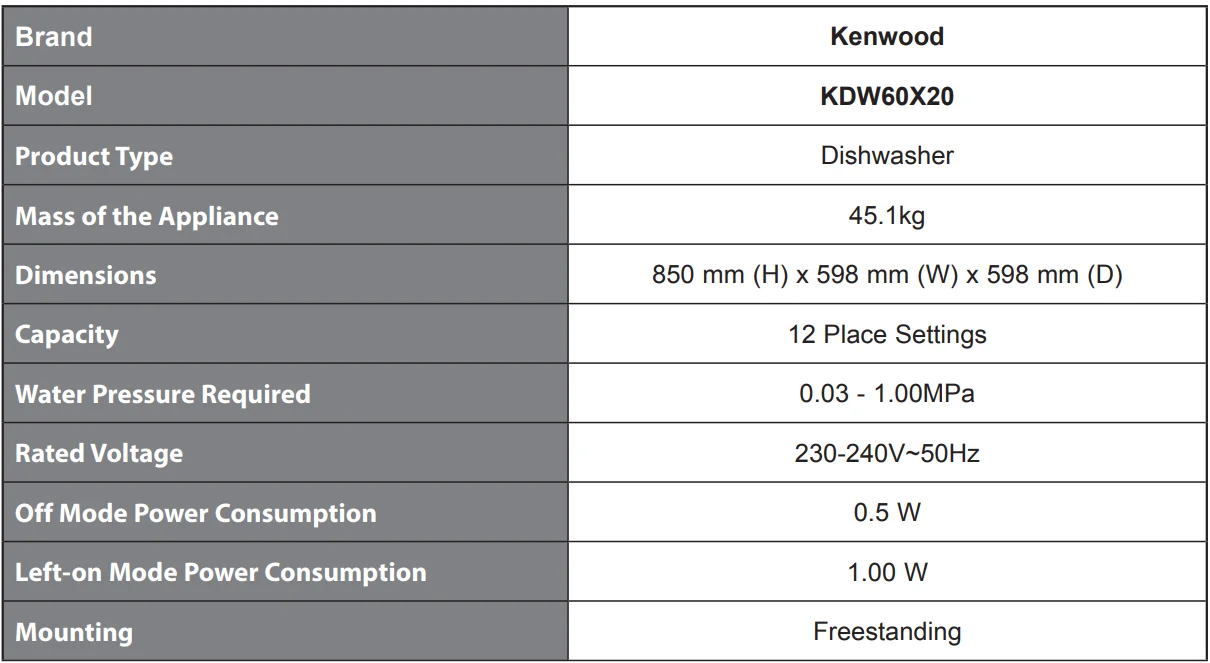
Features and specifications are subject to change without prior notice.
To view energy information about your product, scan the QR code on your Energy Label.
For more manuals by Kenwood, visit ManualsLibraryy
Kenwood KDW60X20 Freestanding Full-Size Dishwasher- FAQs
Why is my Kenwood KDW60X20 dishwasher beeping?
If your dishwasher is beeping and the 1/2, 3h, or 6h lights are flashing, it indicates a fault code. Turn off the power at the wall for five minutes to reset it. Then, check the water inlet valve, filters, and drain hose for any blockages or clogs.
Why isn’t my Kenwood dishwasher releasing the tablet?
This usually happens when the water temperature isn’t hot enough. Ensure the water heats between 120°F–160°F (49°C–71°C) so the detergent tablet can fully dissolve during the wash cycle.
How much salt should I put in my Kenwood dishwasher?
The amount of dishwasher salt depends on your water hardness. For hard water, fill the salt compartment regularly to prevent limescale buildup. For soft or moderately hard water, all-in-one tablets may be sufficient.
Can I use my Kenwood dishwasher without salt?
Running it without salt is not recommended in hard water areas. Without salt, limescale can accumulate inside the machine, reducing cleaning efficiency and potentially damaging internal components.
Why are my dishes still dirty after a wash cycle?
If dishes come out dirty, clean the dishwasher filter and spray arms, ensure dishes aren’t overcrowded, and use the correct wash program for the load. Also, check that you’re using quality detergent and rinse aid.
How can I force my Kenwood dishwasher to drain water?
If water remains at the bottom, check for clogs in the drain hose, filter, or pump. You can also run a short rinse cycle after cleaning the drain components. If the issue persists, inspect the drain valve or call for service.
Why won’t my Kenwood dishwasher start?
Ensure the door is fully closed and latched, and check that power and water supply are connected. If it still won’t start, try pressing the Start/Reset button and wait two minutes to reset the system.
How do I reset my Kenwood KDW60X20 dishwasher?
To reset, press and hold the Start/Reset button for a few seconds until the lights stop flashing. Alternatively, turn off the power at the wall for five minutes, then restart the appliance.
What size is the Kenwood KDW60X20 dishwasher?
This is a full-size 60cm freestanding dishwasher, suitable for medium to large households. It accommodates 12 place settings and offers multiple wash programs for flexible cleaning options.
How long does a dishwasher typically last?
With proper care, a dishwasher like the Kenwood KDW60X20 can last 10–15 years. Regular cleaning, filter maintenance, and descaling help extend its lifespan.

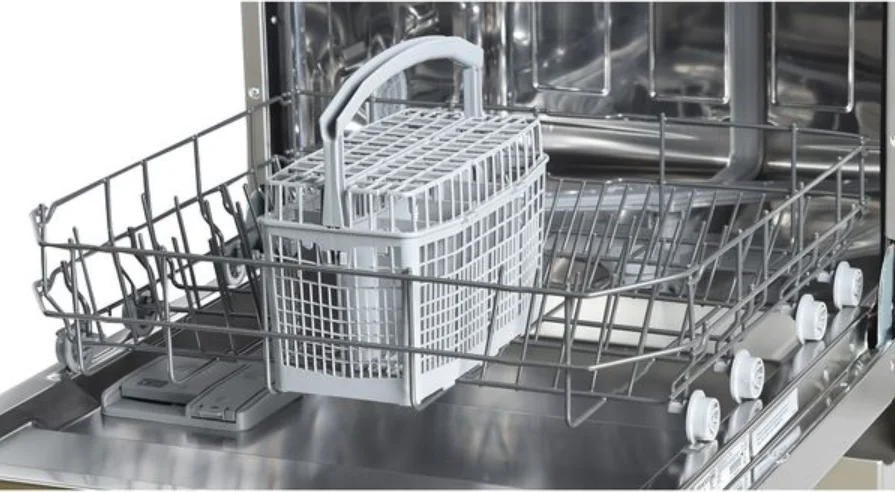
 The supplied door template contains installation information which will assist ist installation.
The supplied door template contains installation information which will assist ist installation.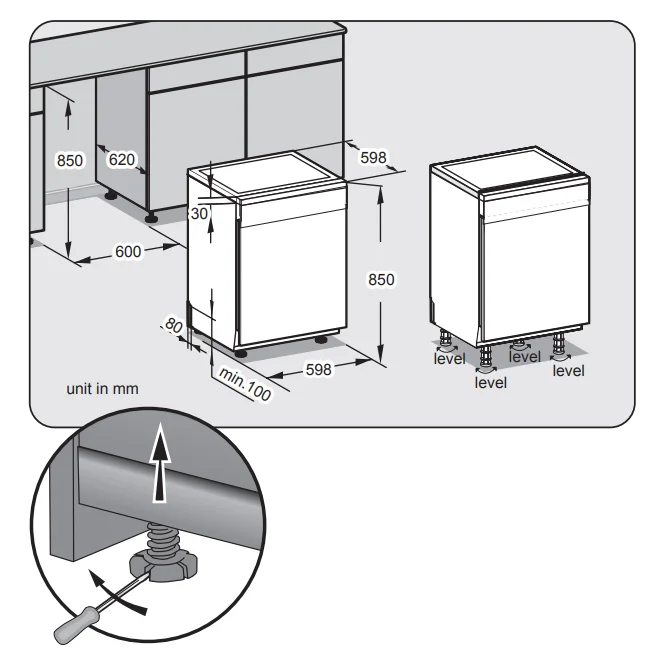 * All images are for reference only; please refer to your individual unit for the actual item.
* All images are for reference only; please refer to your individual unit for the actual item.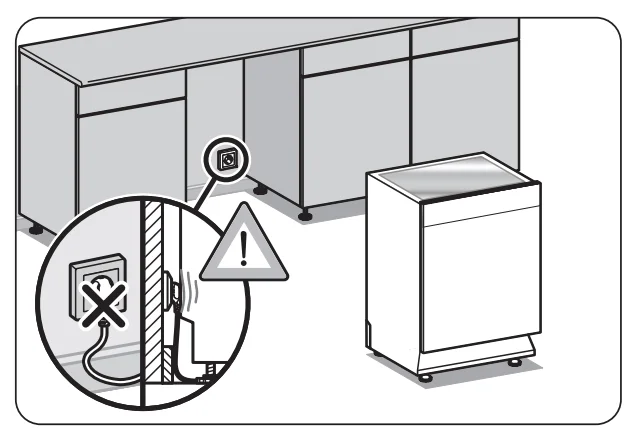 * All images are for reference only; please refer to your individual unit for the actual item.
* All images are for reference only; please refer to your individual unit for the actual item.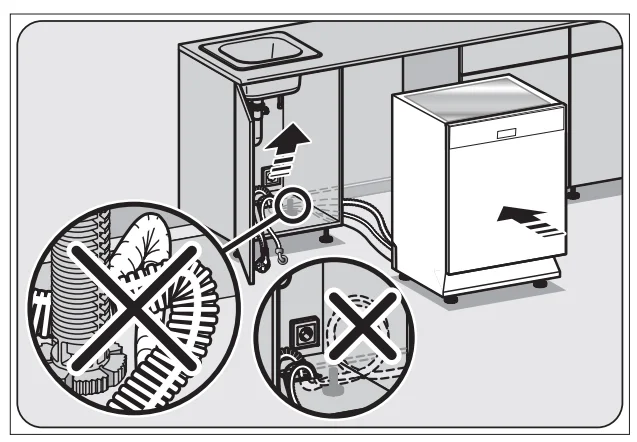
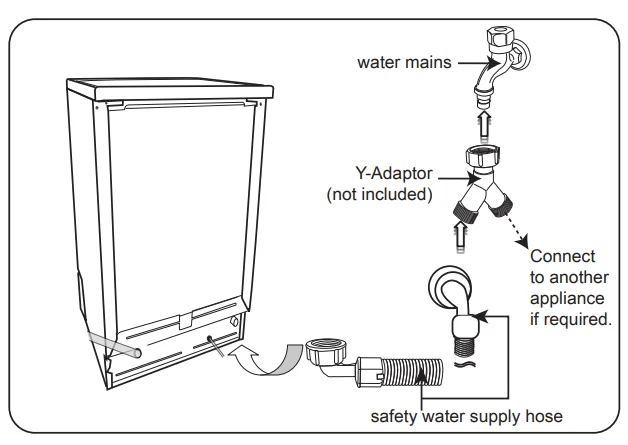



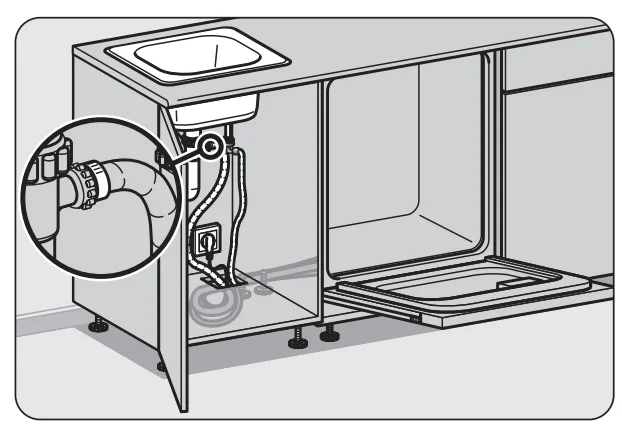 * All images are for reference only; please refer to your individual unit for the actual item.
* All images are for reference only; please refer to your individual unit for the actual item.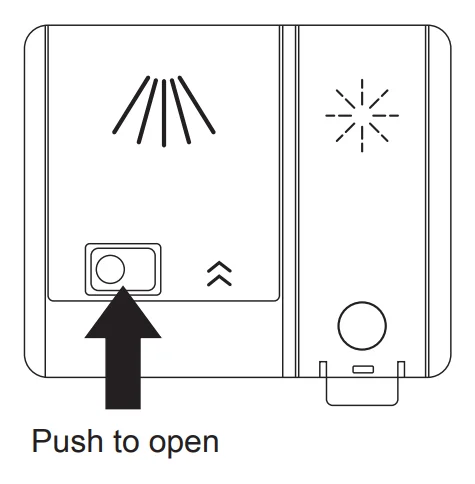
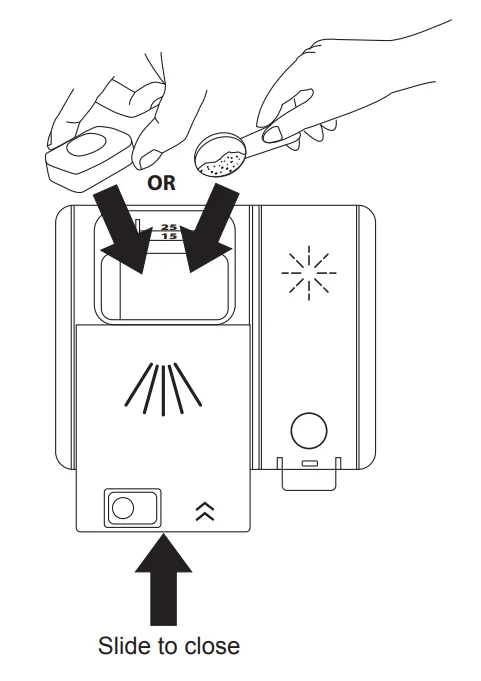


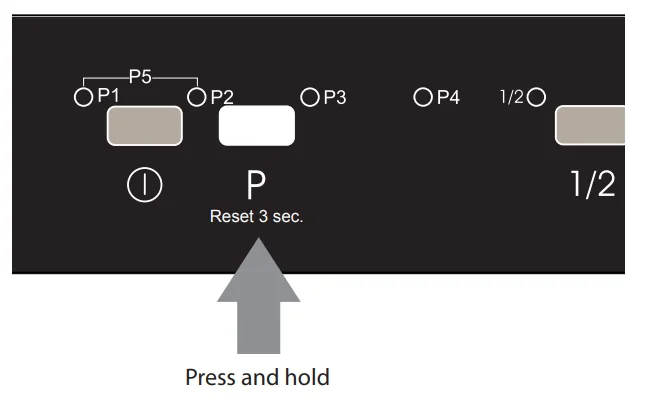

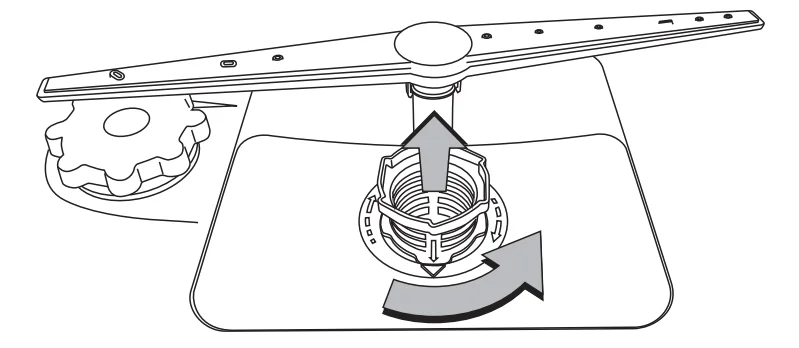 * All images are for reference only; please refer to your individual unit for the actual item.
* All images are for reference only; please refer to your individual unit for the actual item.